As someone who enjoys learning about history while traveling — from war history to cultural history — I knew I would love spending a weekend in New Orleans. New Orleans is steeped in interesting history and culture, and one of the places you can learn more about the city’s history, though sobering, is at one of the plantations along the Mississippi River.
There are several plantations you can visit just outside New Orleans, including Laura Plantation and Whitney Plantation. However, if you only have time to visit one plantation in New Orleans, I highly recommend paying a visit to Oak Alley Plantation.
If you want to visit Oak Alley Plantation during your trip to New Orleans, keep reading to learn more about this historic plantation — including its history, exhibits, how to get there, popular tours, and more!
Disclosure: Some of the links in this blog post are affiliate links, meaning that I earn a commission if you click through and make a purchase at no additional cost to you. This helps me keep the content on my website free for you to enjoy!
What Is the History of Oak Alley Plantation?
Oak Alley Plantation is a public nonprofit organization and a National Historic Landmark with 200+ years of history that has been open to the public since 1976.
The property of Oak Alley Plantation was purchased in 1820, and the mansion was built in 1836 by Jacques and Celina Roman. The Roman Family owned and operated Oak Alley Plantation for several decades. Oak Alley Plantation operated primarily as a sugarcane plantation in the 1800s, which is what you’ll learn about during your time at Oak Alley Plantation.
However, after a virus wiped out the sugarcane crops in the early 1900s, the property was turned into a cattle ranch by Andrew and Josephine Armstrong — the couple responsible for the restoration of the “Big House” and the creation of Oak Alley Foundation.
You can learn more about the history of Oak Alley Plantation on the foundation’s website — but don’t worry. You will learn plenty during your tour of the plantation.
What Is the Best Way to Get to Oak Alley Plantation?
Oak Alley Plantation is in Vacherie, Louisiana, which is a one-hour drive west of Downtown New Orleans. If you have a car, driving to Oak Alley Plantation is the easiest way to get there. However, if you don’t have a car, that doesn’t mean you can’t visit Oak Alley Plantaiton.
Uber, Lyft, and other rideshare services are unreliable in Vacherie and the countryside, so even if you can snag a ride from New Orleans, we don’t recommend getting to Oak Alley Plantation via rideshare. Instead, we recommend booking a tour that includes round-trip transportation to and from New Orleans.
How Much Does It Cost to Visit Oak Alley Plantation?
The cost of visiting Oak Alley Plantation depends on whether you book a tour or drive yourself. Guided tours generally run anywhere from $70–$150 per person, depending on what else is included, from hotel pickup to airboat tours (more on this in the tours section below).
If you drive yourself to Oak Alley Plantation, you can purchase tickets directly from the foundation’s website ahead of time, or at the ticket booth upon arrival. There are two ticket options — Historic Site without “Big House” Exhibit ($25.01 for adults and $7.41 for children) and Historic Site with “Big House” Exhibit ($27.79 for adults and $9.27 for children). There are additional discounts for seniors and military. Children under the age of five are free.
It’s definitely worth paying a few extra dollars for the “Big House” Exhibit. You’ll be allowed access inside the house on an informative tour led by a knowledgeable staff member, and you’ll get to learn a lot about the families who have lived on the property. Tours are held every 30 minutes from 9 AM to 4:30 PM.
Tip: The time you choose when purchasing your tickets is the time you should be ready for your “Big House” Tour — not the time to arrive at the property. Plan to arrive at Oak Alley Plantation at least 30 minutes before your scheduled time in case you run into any delays, so you don’t miss your tour. So, if you choose an 11 AM ticket, plan to leave New Orleans no later than 9:30 AM (if traffic conditions are normal — check Google Maps ahead of time!).
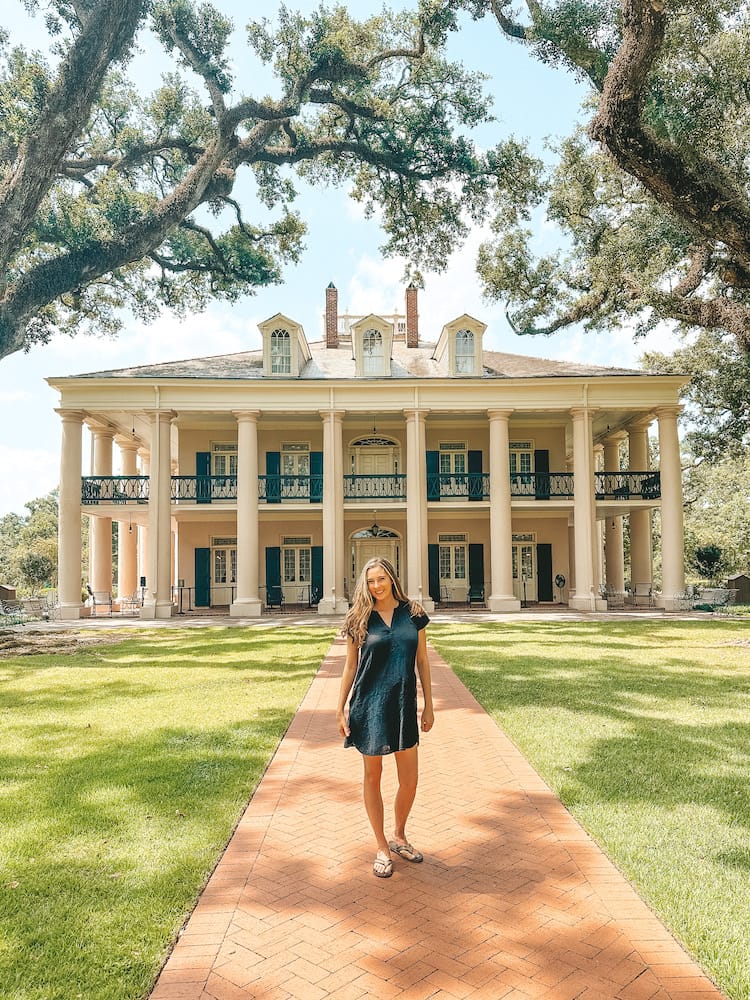
How Long Does It Take to Visit Oak Alley Plantation?
Oak Alley Plantation is open daily from 8:30 AM – 5 PM. The property is closed on Thanksgiving Day, Christmas Day, New Year’s Day, and Mardi Gras (of course — you are basically in New Orleans, after all). All the exhibits stay open until 5 PM, when the property closes.
We recommend spending 2–3 hours at Oak Alley Plantation if you want to see all the exhibits (including the Big House). Remember, you’ll want to factor in an hour’s drive to and from New Orleans, so the entire excursion should be about a half-day endeavor — anywhere from 4–5 hours.
Exhibits at Oak Alley Plantation
Now that you know more about the logistics of visiting Oak Alley Plantation, here is an overview of the notable exhibits you can see at the property:
Slavery at Oak Alley Exhibit
Oak Alley Plantation has an entire exhibit devoted to the 220 people who were enslaved at the plantation. This exhibit was so informative and took a deep dive into slavery as a whole, slavery at Oak Alley, and the individual lives of enslaved people who lived on the property, like Pognon, the seamstress and hairdresser, and Zephyr, the only slave freed by Jacques Roman.
Slavery at Oak Alley explains the difference between “house slaves” and “field slaves,” the day-to-day life of a slave, and what life looked like for enslaved people after emancipation. Oak Alley also has a database where you can learn more about the those who were enslaved at the plantation.
It’s difficult to accept that slavery actually happened, and it can feel more comfortable to ignore the topic altogether. However, learning about slavery is important to understanding the full picture of our country’s history — even the terrible parts. I appreciated that Oak Alley Plantation had put so much time and research into this exhibit — it’s informative but doesn’t shy away from the harsh realities of slavery. It also highlights the individual lives of people who lived on the property — their names, stories, origins, and relationships.
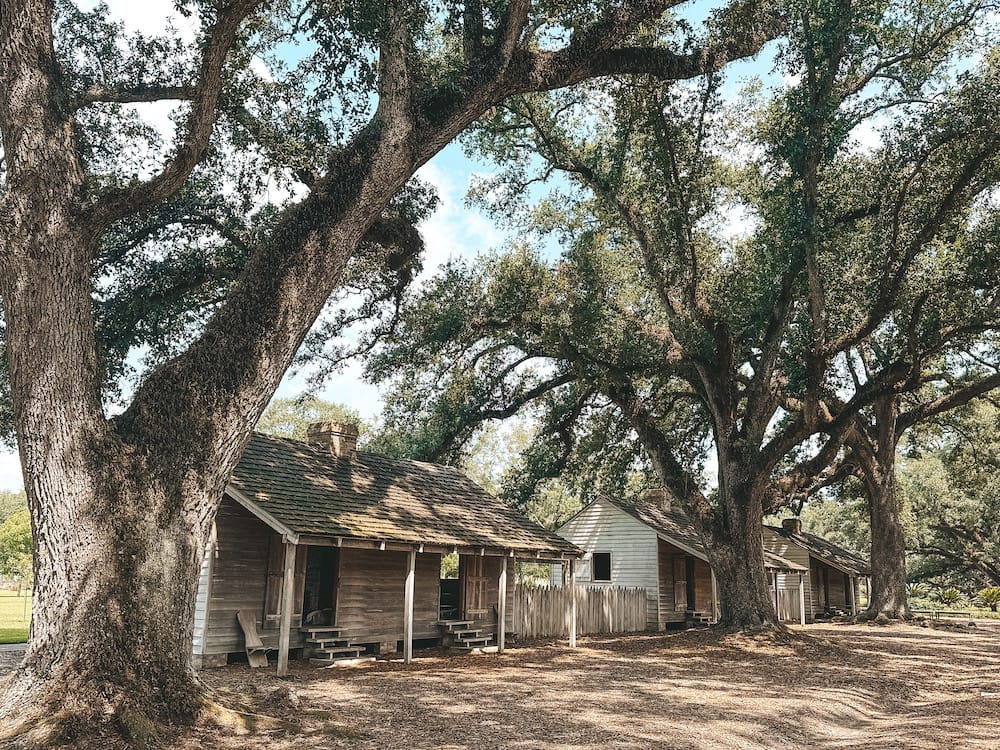
Big House Exhibit
The “Big House” is the house on Oak Alley Plantation where the family lived — it gets its name from being larger than the other structures on the property.
The Big House is the only exhibit at Oak Alley that requires an extra fee to visit, however, it does include a 30-minute guided tour of the first and second floors of the home. If you’re going to make the trip to Oak Alley Plantation, it is worth the additional cost for this tour. You’ll be able to see how the home was decorated during different time periods, learn more about the families who lived inside the home, see original furniture, décor, and artefacts, and more. We were also surprised to learn that several movies and video games had been filmed here!
Photos are not permitted inside the home, but you can take photos of the famous “oak alley” from the balcony. You can also take photos of the exterior of the home.
Tip: Right after the tour, you’ll exit on the “back” of the home. There is a cart here selling drinks — including bourbon lemonade, mint juleps, and more! I recommend grabbing a drink to keep yourself cool while exploring the rest of the property. Aside from the Big House, the rest of the exhibits are outside and/or inside with no air conditioning.
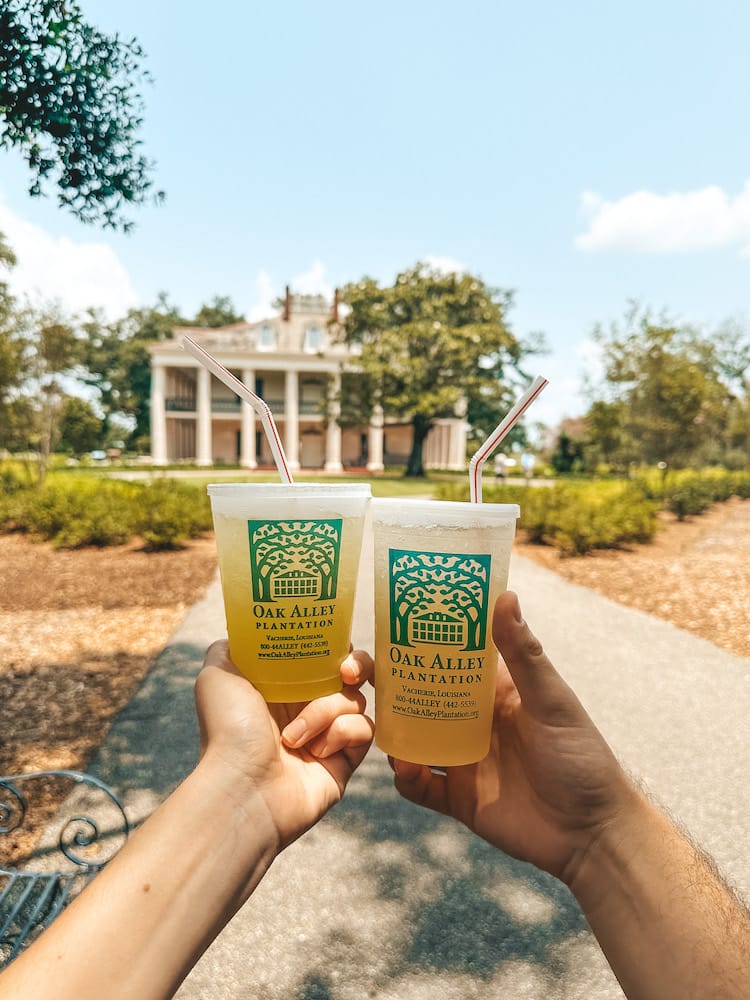
Oak Alley
Remember the famous alleyway of oak trees you just saw during your tour from the balcony?
I recommend swinging around to take a photo here after the tour. You don’t drive through the trees when entering Oak Alley (this is different than Boone Hall Plantation, one of the best day trips from Charleston and another informative plantation tour) — so you need to make an effort to see the alleyway during your time on the property. After all — it is the property’s namesake!
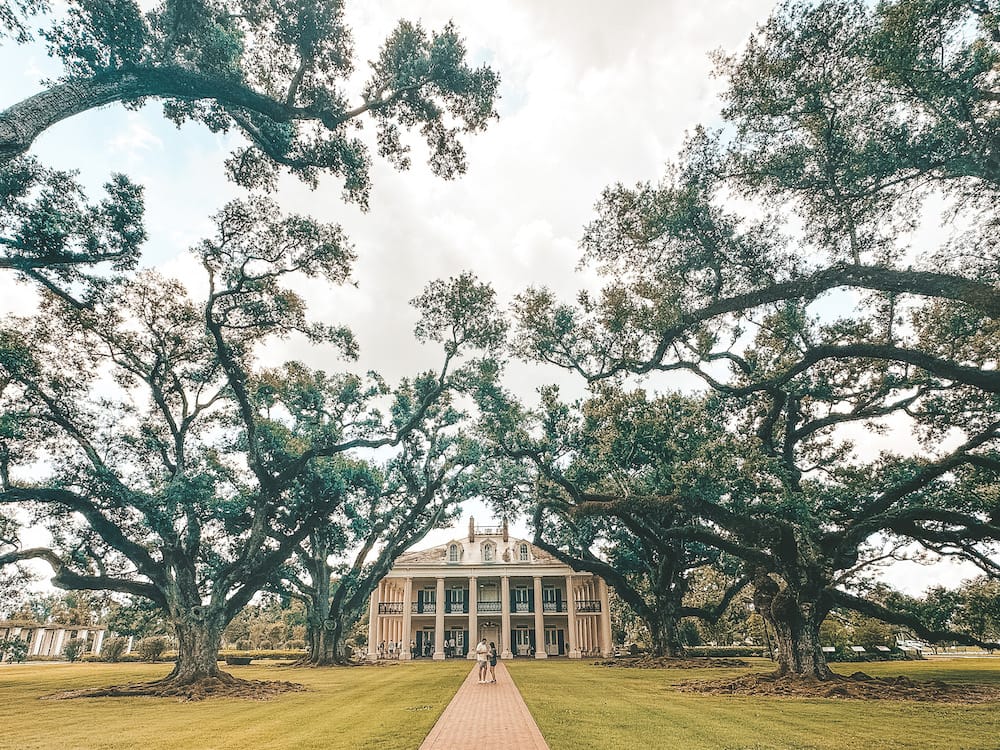
East & West Gardens
Oak Alley Plantation has two gardens — the “East Gardens” on the east side of the home, and the “West Gardens” on the west side of the home.
The West Garden is modeled after how the garden would have looked from 1840–1860, when Jacques and Celina Roman lived on the property, and The East Garden is modeled after how the garden would have looked in the 1900s, when Josephine Stewart owned the property. Both are beautiful and worth visiting during your time on the property, but the hedges, azaleas, and roses in The East Garden were my favorite. The West Garden is pictured below.
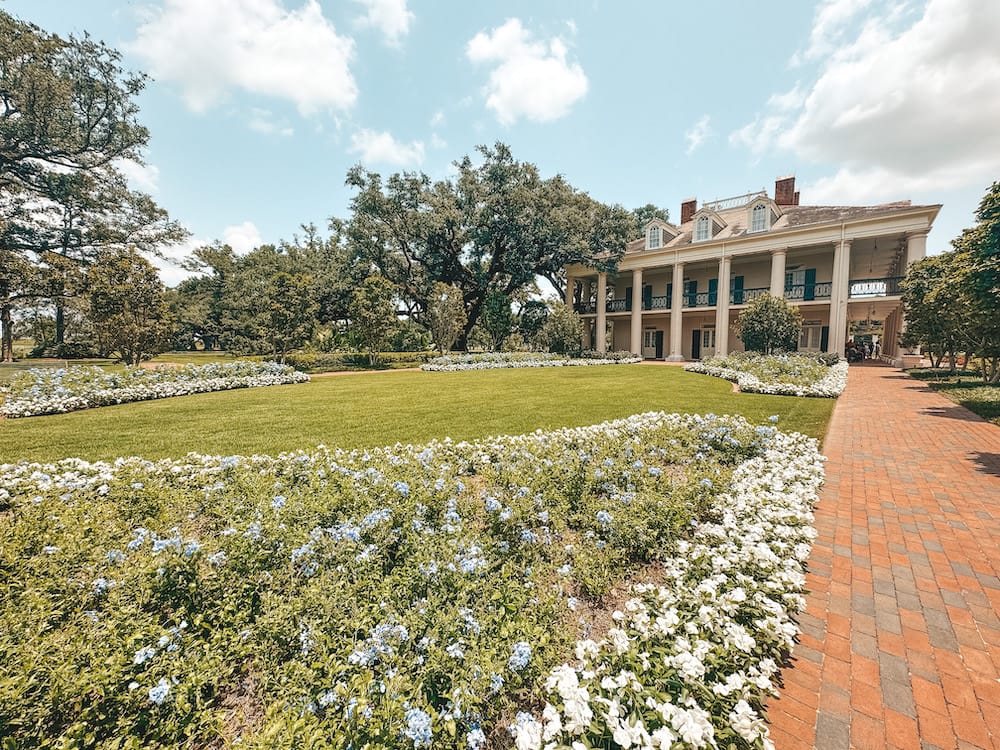
Sugarcane Theater
After learning that sugarcane was the primary crop grown at Oak Alley Plantation, I became immediately interested (and curious) about how sugarcane becomes sugar. Fortunately, there is a whole exhibit at Oak Alley Plantaiton dedicated to who sugarcane is grown, harvested, manufactured, and ultimately, turned into sugar!
This is a great exhibit to visit when you’re ready to get off your feet for a few minutes — there are several benches inside a wooden building that you can sit on while watching a 5–10 minutes film about the history of sugarcane and modern sugar production. Apparently, turning sugarcane into granulated sugar is a pretty long process — it must be harvested and washed, the juices must be extracted, then it must be crystallized and centrifuged before the sugar is packaged.
You don’t want to skip this exhibit. If you arrive in the middle of the film, just stick around until it starts over again — you won’t have to wait long between showings.
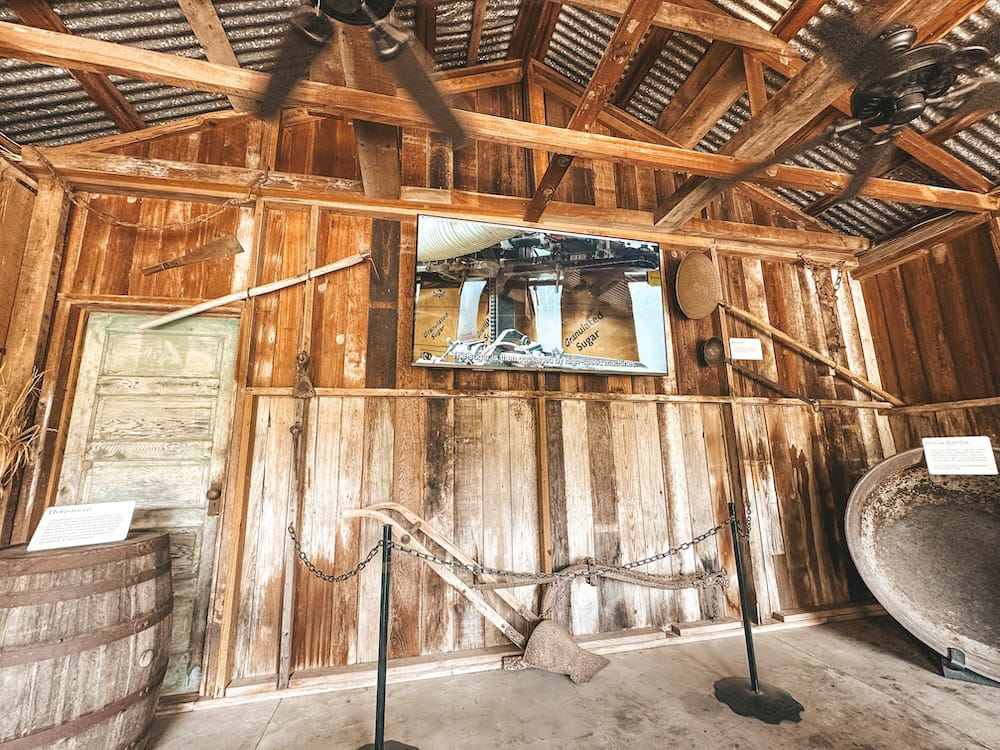
People of Oak Alley Exhibit
People of Oak Alley Exhibit shares information about the people who lived at Oak Alley Plantation from the 1860s until the 1920s, when the property was purchased by the final owners and turned into the Oak Alley Foundation.
The exhibit is completely outdoors (located near the West Garden) and includes a series of plaques with a chronological timeline attached. You’ll learn a lot of this information during The Big House Tour, so you might not need to spend much time at this exhibit.
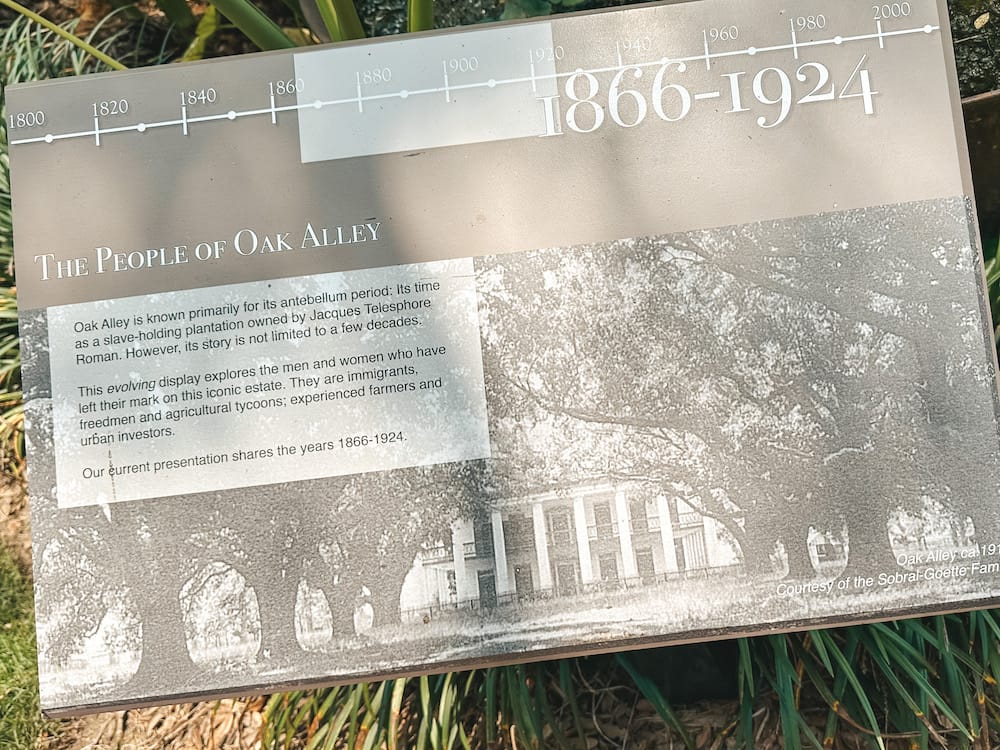
Blacksmith Shop
The Blacksmith Shop is a forge that shares the history of forging metal on plantations. It’s located behind the restaurant, gift shop, and inn — so you will miss it if you aren’t looking for it.
Amenities at Oak Alley Plantation
In addition to the exhibits, Oak Alley Plantation offers some additional amenities, including the following. These are all located south of the Slavery at Oak Alley Exhibit.
Oak Alley Plantation Restaurant & Inn
Did you know you can actually stay at Oak Alley Plantation?
Oak Alley Plantation Restaurant & Inn offers several one-bedroom and two-bedroom cottages where guests can stay overnight. Each reservation includes a full breakfast, and you can also add dinner room service to your reservation. Tours and admission to Oak Alley Plantation are not included with each reservation.
Oak Alley Plantation Restaurant is open to all visitors at the plantation — both tourists and overnight guests — and serves breakfast from 8:30 AM to 10 AM and lunch from 11 AM to 3 PM. The menu focuses on traditional Creole and Cajun cuisine, so you’ll be able to enjoy items like beignets, shrimp and grits, gumbo, po boys, fried fish, smoked sausage, and more!
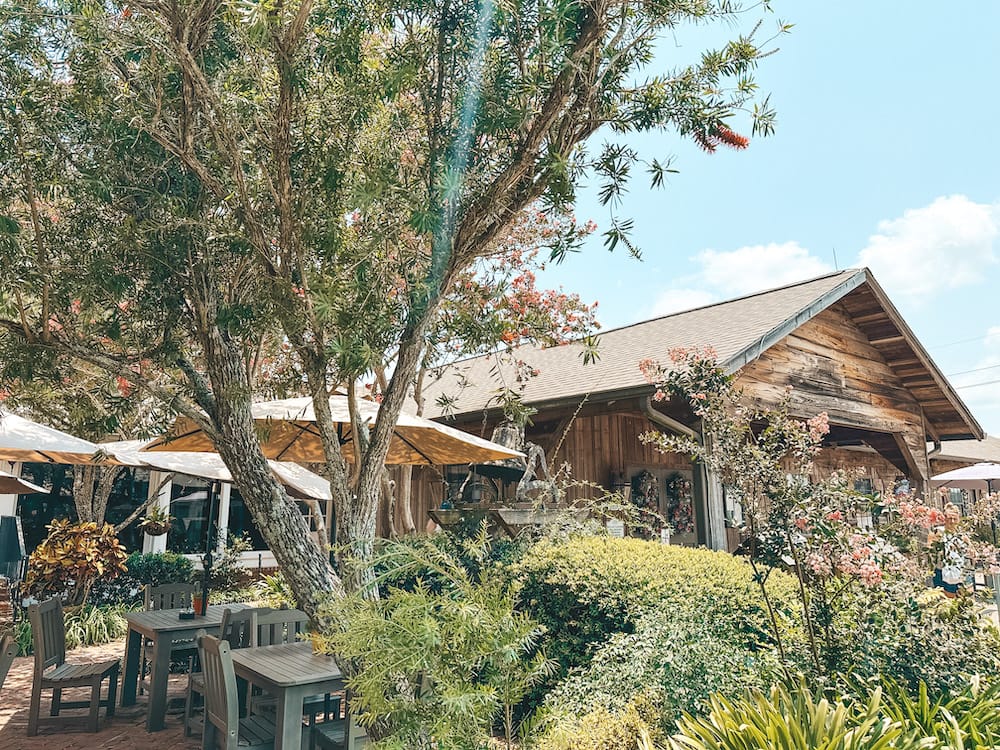
The Plantation Cafe & Ice Cream Parlor
If you’re craving a quick bite or a sweet treat, The Plantation Cafe and Ice Cream Parlor serves salads, wraps, and sandwiches, as well as sweet treats, like ice cream!
Gift Shop
Oak Alley Plantation has a great gift shop that has much more than memorabilia from the plantation itself — the shop is filled with tons of other Louisiana-themed goodies and souvenirs, including home décor, kitchen items, food and drinks, and more.
Oak Alley Plantation Tours
If you’d like to visit Oak Alley Plantation on a tour that includes round-trip transportation to and from New Orleans, check out some of these top-rated tours:
- Oak Alley Plantation & Airboat Swamp Combo Tour — This full-day tour includes pickup and drop-off from your hotel in New Orleans, and in addition to touring the grounds at Oak Alley Plantation, you’ll be able to take an airboat tour through the bayou swamplands, where you’ll see alligators, birds, and other animals. Over 450 travelers have rated this tour 4.7/5 stars!
- Oak Alley Plantation Half-Day Tour — If you’d only like to visit Oak Alley Plantation, this half-day tour with transportation to and from New Orleans is perfect for you. This tour includes a guided tour of the Big House and a self-guided tour of the grounds at Oak Alley Plantation.
- Oak Alley Plantation & Swamp Cruise Day Trip — Get picked up from your hotel in New Orleans and embark on an adventure at Oak Alley Plantation and in the bayou. This seven-hour tour includes hotel pickup, entry to and a guided tour of Oak Alley Plantation, and a narrated swamp cruise. Over 700 travelers have rated this tour 4.7/5 stars!
Tips for Visiting Oak Alley Plantation
After visiting Oak Alley Plantation, here are some of my personal tips:
- Stay hydrated — Bring plenty of water. It gets hot in Louisiana (especially if you visit in June, like us!), and most exhibits at Oak Alley Plantation are at least partially outside.
- Arrive early — If you’re going on the Big House Tour, arrive at least 30 minutes before your scheduled tour time. This will give you plenty of time to check in, walk from the ticket counter to the entrance of the house, and get in line.
- Purchase tickets in advance — Oak Alley Plantation is a popular tourist attraction from New Orleans and Baton Rouge, and tickets book up quickly, especially on weekends. Buy tickets (or book a tour!) in advance to ensure tickets don’t sell out.
- Prioritize these exhibits — If you only have time for a few exhibits, I recommend The Big House, Slavery at Oak Alley, and the Sugarcane Theater. I found these exhibits to be the most informative and interesting.
- Snap photos between tours — If you want a photo in front of The Big House from the “Oak Alley” without a bunch of people in the background, wait until the tour group enters the house at the beginning of each half hour (10 AM, 10:30 AM, 11 AM, etc.) and snap a picture before the next tour group begins lining up.
- Don’t skip the gift shop — The gift shop at Oak Alley Plantation actually has some really fun finds if you have time to peruse before heading home.
FAQs: Oak Alley Plantation
How many slaves were at Oak Alley Plantation?
There were 220 enslaved people who lived at and worked at Oak Alley Plantation. You can learn more about the day-to-day life of slaves, as well as their names, origins, and relationships, in the Slavery at Oak Alley exhibit at Oak Alley Plantation
Can you sleep at Oak Alley Plantation?
You can stay overnight at Oak Alley Plantation at the Oak Alley Plantation Restaurant & Inn. There are one-bedroom and two-bedroom cottages you can choose from during your stay — and complimentary breakfast is provided as well!
How long is the Big House tour at Oak Alley Plantation?
The Big House tour at Oak Alley Plantation generally lasts 30–40 minutes. Tours start at the beginning of each hour and each half hour.
Explore Oak Alley Plantation for a Deep Dive into Louisiana History
If you have time while you’re in New Orleans — plan to spend a day exploring Oak Alley Plantation!
After reading through the exhibits, you will walk away with so much knowledge about the history of Louisiana and the United States — both the good and the bad. Plus, you’ll be able to see a whole new side of the state outside the big city.

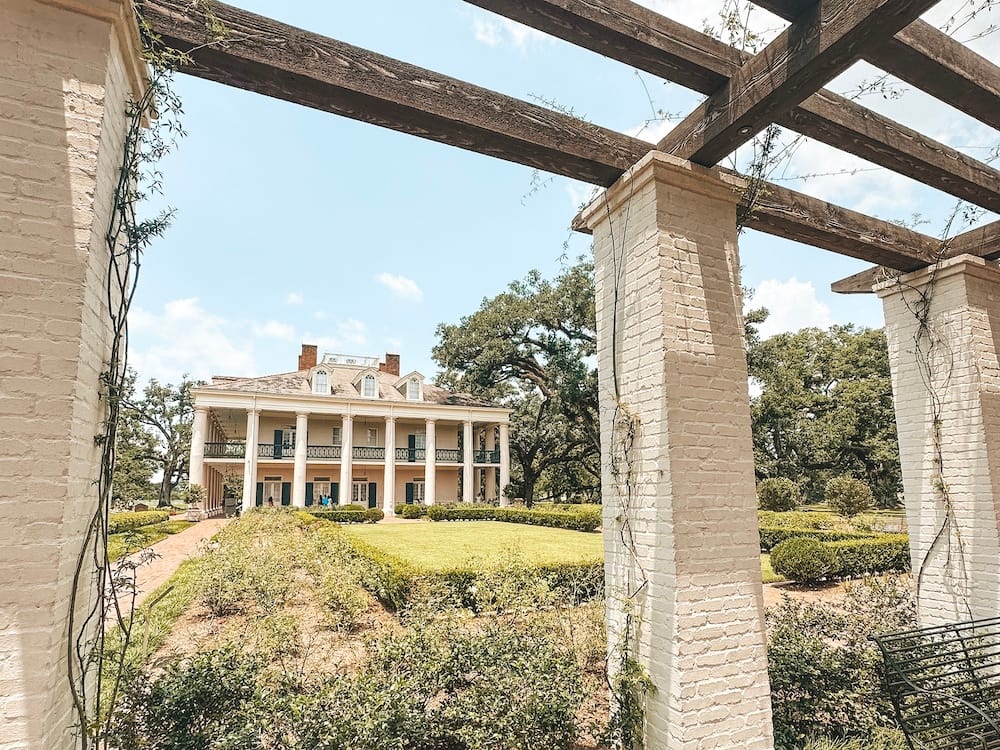
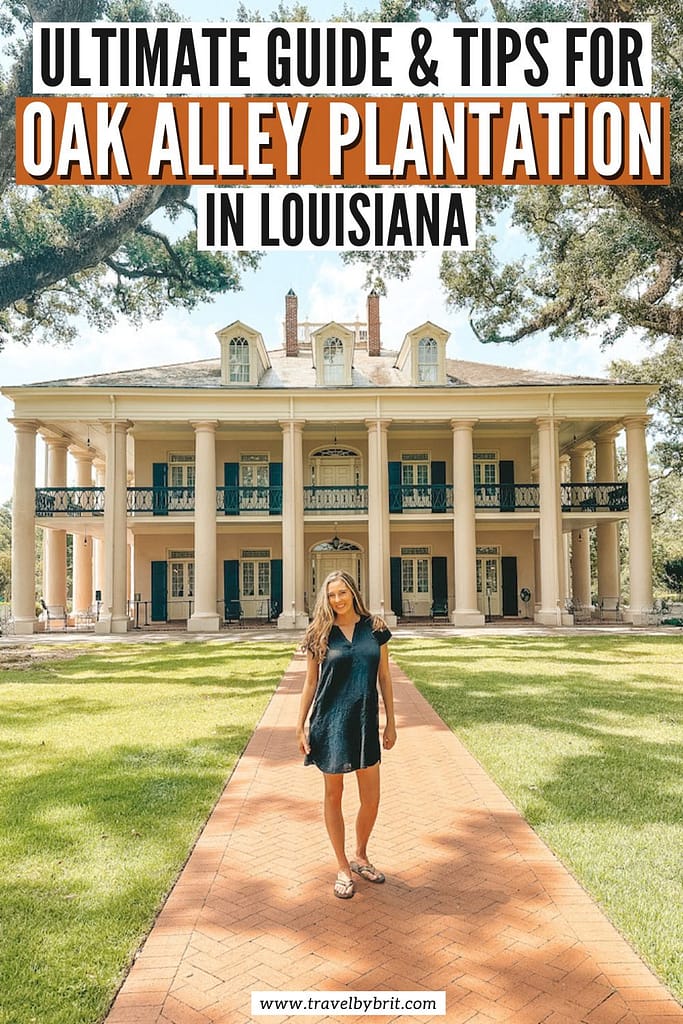
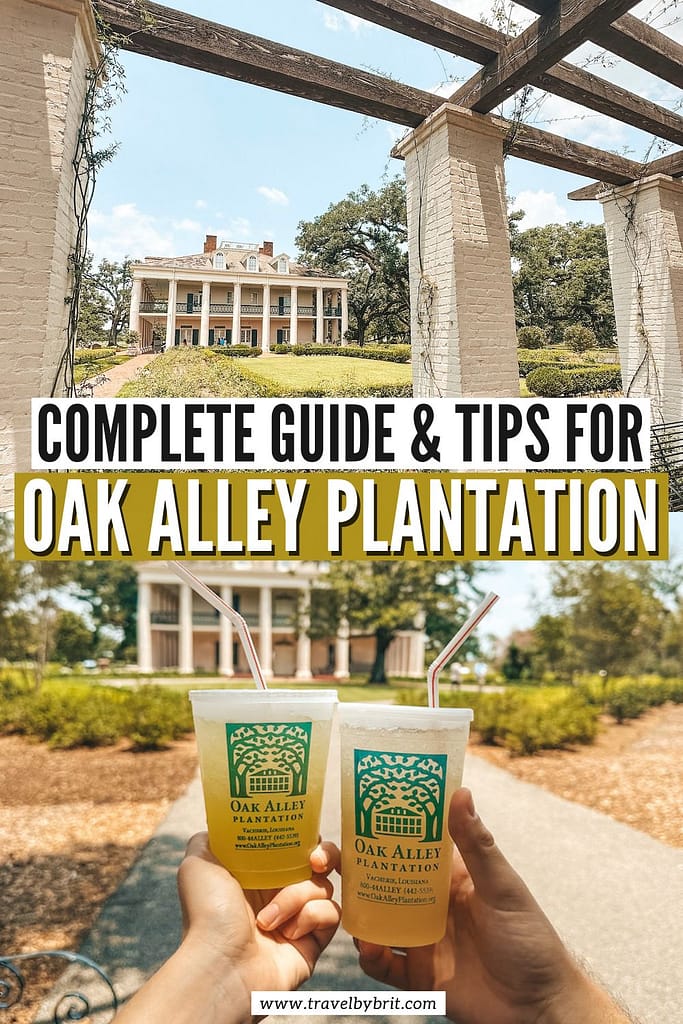
0 comments